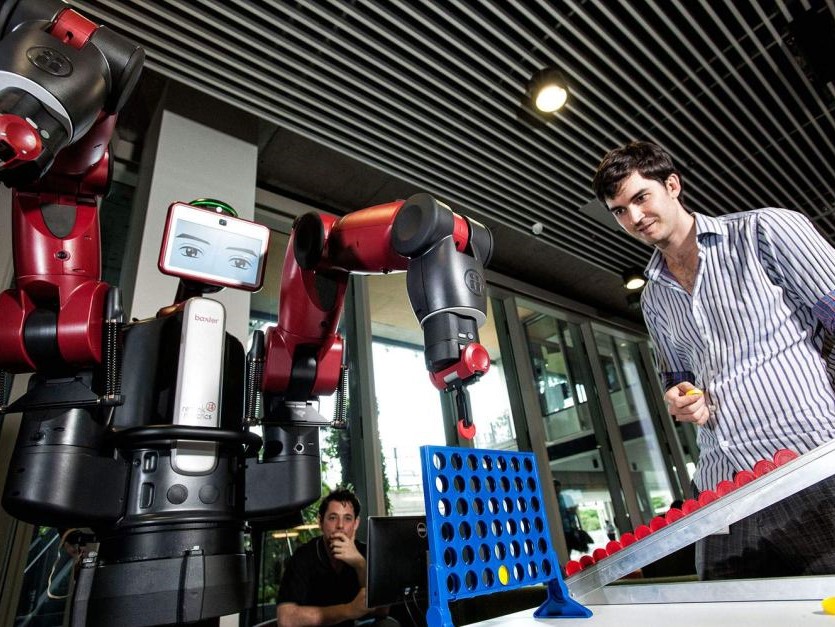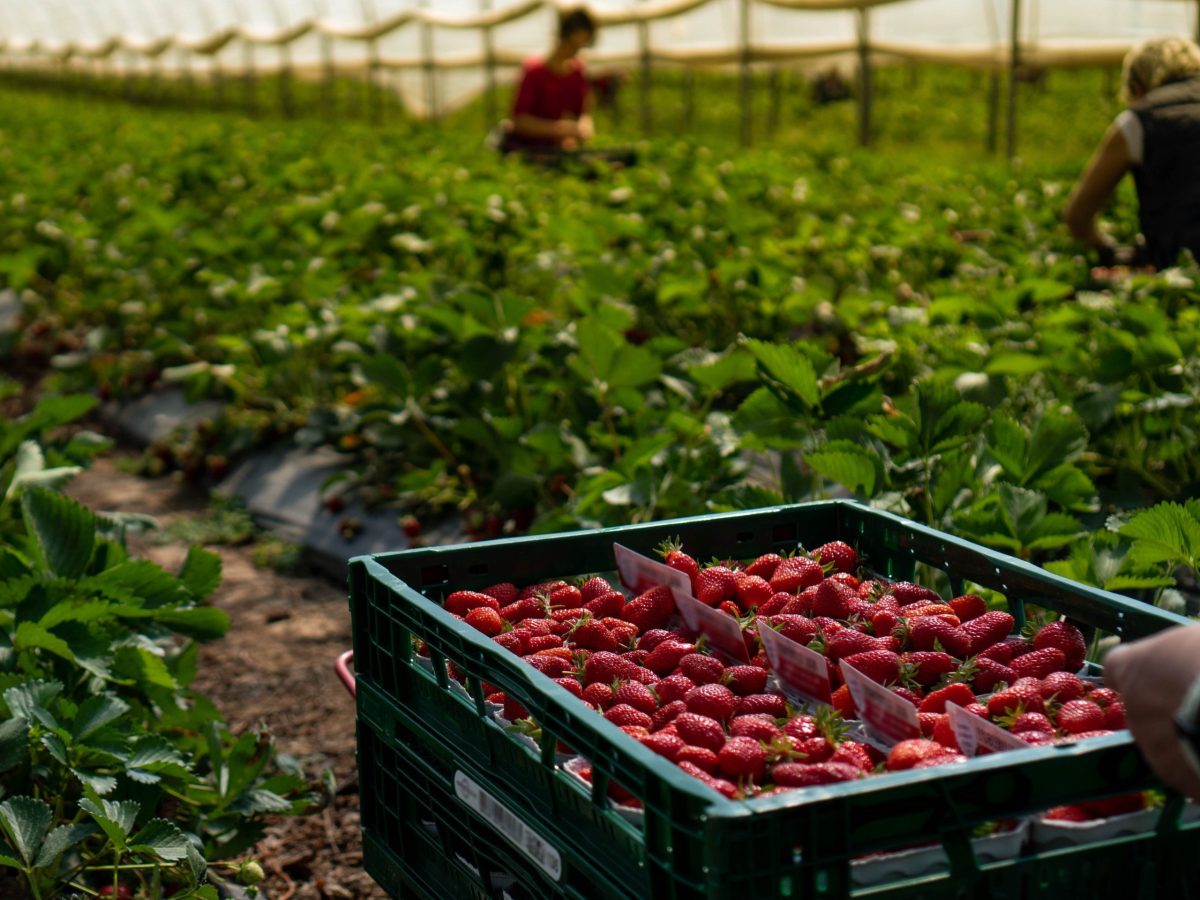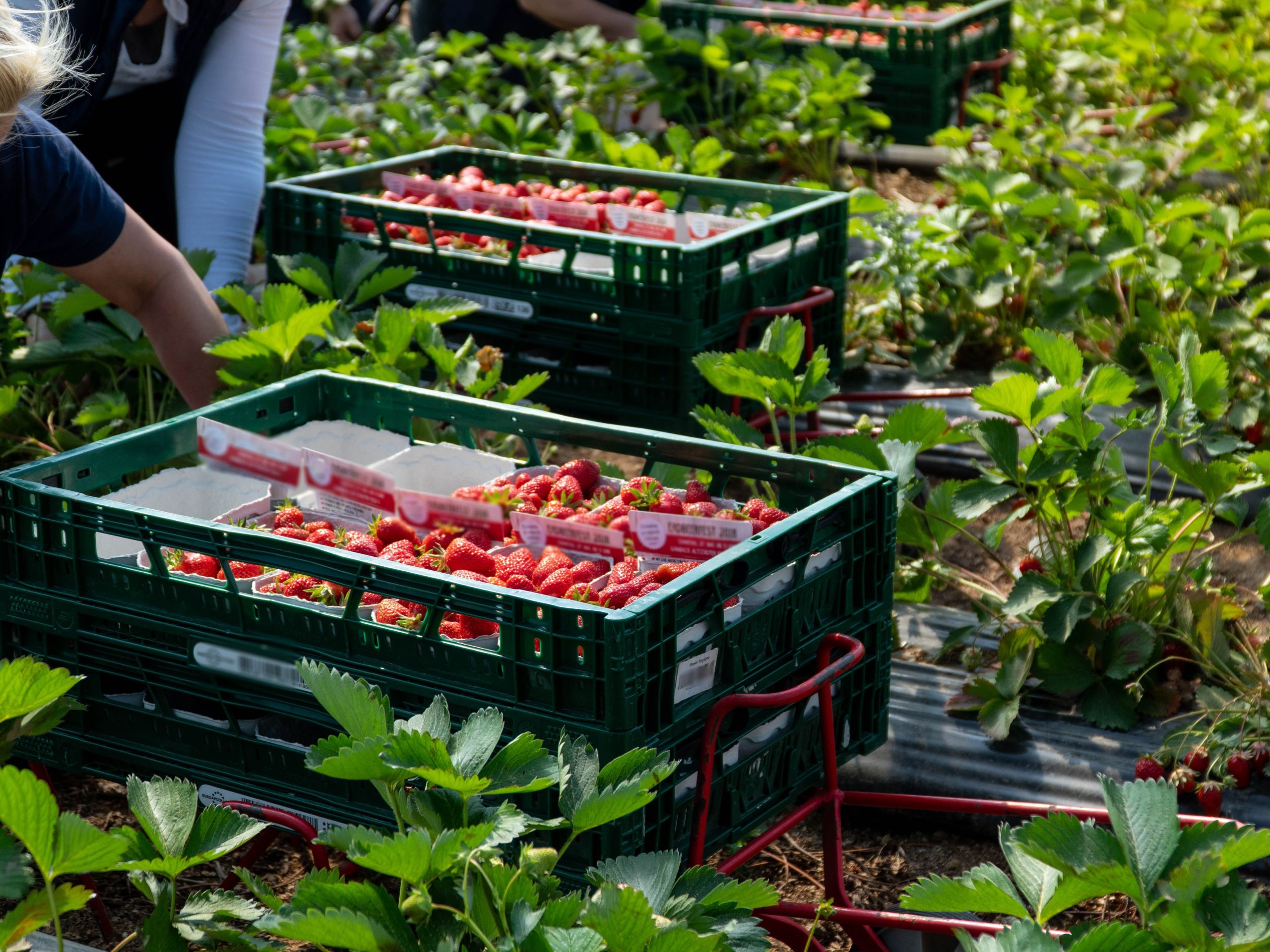Training fruit pickers with virtual reality (VR); using exoskeletons to support physical labour; deploying robots to transport fruit containers so workers can focus on picking – these are just some of the tech-backed solutions being considered in a bid to help Australian berry growers improve harvesting efficiency and save on labour.
Delivered through Hort Innovation and led by The Growth Drivers in consultation with berry growers across Australia, the research was aimed at identifying viable, cost-effective technology that addresses one of the sector’s greatest challenges.
Technology-backed solutions identified were developed in consultation with prospective technology providers, then validated and honed with the help of grower feedback obtained via interviews and a dedicated workshop.

QUT Robotics Centre’s Dr Chris Lehnert tests a robotic prototype in the lab. Robotic harvesting aids would reduce the need for human labour in horticulture, where fruit picking is time-consuming work. Credit: Queensland University of Technology
A tech-enabled future for growers
Hort Innovation CEO Brett Fifield said the research provides a glimpse into the near future.
“There is an increasing demand from horticultural industries to explore and adopt technologies that help solve growers’ biggest challenges,” he said. “The berry industry has experienced significant growth in both volume and value but is heavily dependent on hand-picking to meet the demand for fresh fruit.”
According to The Growth Drivers project lead Ky Snyder, the research showed that technology offers many viable solutions –for berry growers and the broader horticulture sector.
“The use of virtual reality is becoming increasingly popular in horticulture, providing workers with immersive and engaging training experiences,” he said. “There is huge potential for the technology to revolutionise fruit picker training by reducing training time significantly, and also facilitating off-season and off-site training.
“Another example are the autonomous collaborative robots that use artificial intelligence to navigate between locations for various in-field tasks such as crop scanning and transportation. By eliminating time spent by pickers in transporting picked fruit and for collection of supplies, a potential labour saving of up to 20 per cent across picking crews is possible.”

Farm labourers picking strawberries – a labour-intensive task. Credit: Shutterstock
Hillwood Berries farm manager Andrea O’Halloran said the research has shown members of Australia’s berry industry what’s possible.
“This research provides our industry with a roadmap for further development of these solutions, with the ultimate goal of berry growers being able to put this technology into action,” she said.
For more information about the project and its findings, visit the Rubus Labour Optimisation website.
Source: Eyeing a future where fruit pickers are trained by virtual reality I Hort Innovation media release, 4 July 2023
Lead image: Harvesting strawberries is a labour-intensive task that could be made more efficient and cost-effective by adopting technological aids, says Hort Innovation. Credit: Shutterstock


